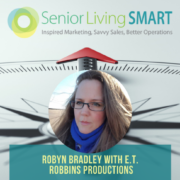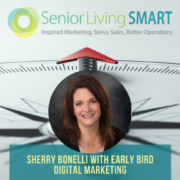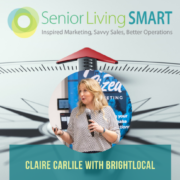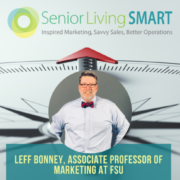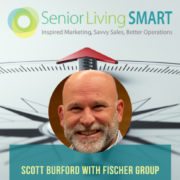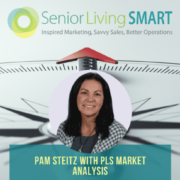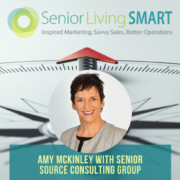Senior Living Marketing Perspectives: Mastering Content Marketing
Topics Discussed and Key Points:
- Turning data into great messages that grow your company
- Reconciling keywords that people search for with the keywords you use to describe your business
- The impact of the pandemic on the senior living industry
- Transitioning from marketing to sales—and having synergy between both
- Catering your message from the Greatest and Silent Generations to the Baby Boomers
Episode Summary:
In today’s episode, Debbie speaks with writer Robyn Bradley. A self-proclaimed “copy bitch by day and novelist by night”, she is an SEO expert who for two decades has put together, among other things, websites, sales letters, print ads, radio spots, and marketing brochures.
Robyn has an MFA in Creative Writing from Lesley University, and she won a short story award in 2007. Her work has appeared in FictionWeekly.com, Metal Scratches, The Breakwater Review, Writer’s Digest, and The MetroWest Daily News, and others.
In today’s conversation, Robyn talks all things content marketing and the art and science of writing relevant, unique, and utterly human copy. She says that it all begins with pinpointing the right keywords to write around. With those search phrases as your starting point, you can begin to bridge customer desires with your particular goals as a company and tell an effective and engaging brand story.
Throughout the pandemic—and even as we emerge from it—the companies who thrive stay human and are not afraid to tackle the tough topics. As a senior living provider, trust can be gained when marketing makes an effort to explain, transparently, how the facility and staff will be able to keep residents healthy and safe amid the ongoing crisis. Videos and virtual tours are excellent ways to quickly capture that trust.
The operators who win are those who make it easy for prospects to find them, engage with them, and choose them, by meeting them where they are and removing friction along their journey.
As the industry shifts from catering to the Greatest and Silent Generations to the Baby Boomers, the key to success is to take everything that already works and “dialing them up by hundred,” as Robyn puts it. Radical authenticity and more customizable living spaces are also vital.
Debbie likens generational changes in the senior living space to those of the university, where the traditionally uniform college environment has largely disappeared so that the modern student now enjoys a plethora of choices regarding where they live, work, hang out, and eat.

